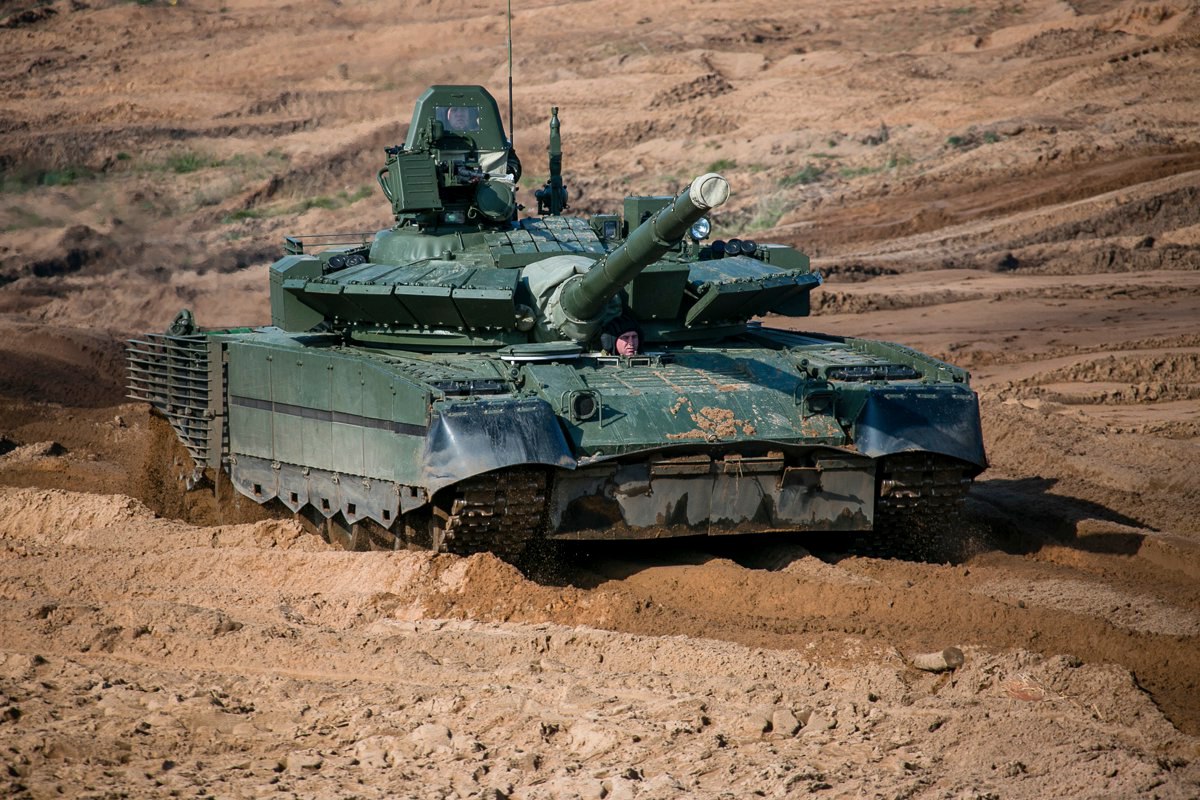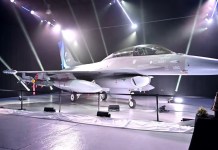Russia’s T-80BVM main battle tank (MBT) is emerging as an effective weapon, shelling Ukrainian troops while also engaging in classic tank battles.
Publicity material released by the Russian Ministry of Defense (RuMoD) over the last two months has seen the tank prominently in action in southeast and eastern Ukraine.
Slipping between open fields and hiding in tree lines, it fires on targets spotted by overhead drones and its robust targeting systems. The tank is the most modern and upgraded version of the T-80 with the latest gun, armor, and protection systems.
Using the T-80 also bares the unconventional employment of heavy weapons in the Russian ground forces.
MBTs are not used for breakthrough roles in bursting open enemy defenses and hunting other enemy tanks but for indirect fire support roles. At a more significant techno-industrial and logistical level, it also bares Ukraine’s vulnerability to supply chain disruptions in maintenance and spare parts.
This also comes against the backdrop of Ukraine’s failed counteroffensive that has seen massive losses in men and material, unable to make any strategic dent in the situation or push back Russia from the Ukrainian territory it holds.
RuMoD Videos
Publicity material released by the RuMoD captures the T-80BVM’s function on the frontline. A video it published on June 29 showed one such tank destroying “enemy hardware” in the Kupyansk direction.
Publicity material released by the RuMoD captures the T-80BVM’s function on the frontline. A video it published on June 29 showed one such tank destroying “enemy hardware” in the Kupyansk direction. #Ukraine #ATACMSforUkraine pic.twitter.com/R7No5UT95j
— EurAsian Times (@THEEURASIATIMES) September 9, 2023
The tank fires from a tree line with the gun elevated. An overhead drone captures the shell landing beside a house.
What appears to be an armored vehicle is seen burning. The tank then changes position. The video also shows the inside of the tank turret with the autoloader in action and the gunner giving commands to the other crew.
Another video on August 31 showed a T-80BVM with a metal roof atop the turret – possibly to protect against Ukrainian kamikaze drones that hit tanks in a top attack mode since the armor is the weakest there — firing similarly from wooded areas abutting open fields.
In south Donetsk, this tank has an extra layer of what appears to be explosive reactive armor on the side of the turret, besides skirts on the panels covering the tracks.

Footage from a drone captures a shot falling on a tree line, followed by a screen of a thermal imaging system capturing another shell landing on the ground with a massive explosion.
This means a piece of Ukrainian hardware has been hit. However, It is unclear whether the thermal footage is from within the tank or the drone.
In both instances, “firing adjustment,” “precise strikes,” and “location of enemy manpower” of the tank were obtained by reconnaissance unmanned aerial vehicles (UAV).
Other videos on X (formerly Twitter) also showed the T-80BVMs in action. Using reconnaissance drones is consistent with the Russian artillery practice of integrating field guns with UAVs as a part of a ‘reconnaissance-strike circuit,’ touched upon in previous EurAsian Times analyses.
Russia Learns From Mistakes
The T-80BVM’s effectiveness as both an artillery and a main battle tank is owing to sound tactical approaches and design philosophy, according to former Indian Army armored corps officer Col. Rajendra Bhaduri.
“Russia became smarter in using tanks after initial mistakes and losses. They are now employing the Kamov Ka-52 Alligator and Su-25 in anti-armor roles to destroy enemy tanks while using their tanks as mobile ‘pillboxes,” Bhaduri said.
Interestingly, even the Indian Army used retired T-55s and Vijayantas as mobile pillboxes on the Line of Control (LoC) for direct shooting.
The last three months have seen the Ka-52 emerging as Russia’s most effective tank killer, destroying dozens of Ukrainian tanks with long-range Vikhr anti-tank guided missiles.
This is not to say that the BVM can’t fight enemy armor, as a video circulated late July showed a T-80BVM destroying an entire Ukrainian amour column, some of which comprised the US-made MRAP 1224 MaxxPro tactical vehicle.
Upgrades
“The Russians upgraded the T-80BVM’s 2A46 smoothbore 125 mm gun, which gives it greater destructive power than the 122 mm D-30 towed howitzer. Effectively, the D-30s are free to be shifted elsewhere on the battlefield.
The new 2A46 also has a more extended range, which helps it keep outside enemy ATGMs’ 5 km range,” Bhaduri explains.
The Soviet-era T-80 was manufactured in Ukraine and Russia during the USSR. The UD version with a diesel engine was made in Ukraine and was essentially a troubled project.
The U variant that ran on a gas turbine was made in Russia, similar to the ones that power helicopters and a few aircraft.
Incidentally, even the US’s Abrams tanks use the gas turbine powerplant. A fuel guzzler is often prone to breakdowns, so the tank must be refueled every few hours.
“Russia’s T-80BVM’s gas turbine engine, however, shares the engine with its Mi-8 helicopter, which makes spare parts readily available and the logistics much more manageable,” Bhaduri added.
The slight whistling-like sound in some of the footage of the tank in the RuMoD is a sign of a turbine engine.
Bhaduri contrasted this with Ukraine’s inventory of multiple types of tanks like Germany’s Leopard and the British challenger, along with an even more diverse fleet of IFVs, none of which are manufactured by Kyiv.
“This makes their maintenance exceedingly difficult,” Bhaduri added.
The T-80BVM is an advanced version of a T-80BV that has been heavily modernized.
“This includes modern ERA panels and active and passive self-protection systems (APS/PPS). The rest of the internal electronics are largely the same,” Bhaduri added.
- The author can be reached at satamp@gmail.com
- Follow EurAsian Times on Google News




